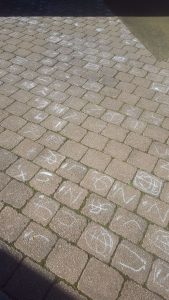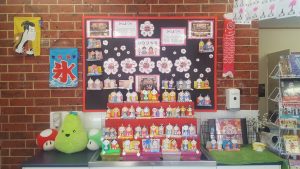みんなさん 今日は。
minnasan konnichiwa.
Welcome back to Term 3!
In the Junior Japanese room we have already begun literally brushing off the dust- chalk dust that is! Our year 1 and 2 students today began their learning exploration into the basic Japanese characters known as ひらがな (Hiragana). After learning that there are 3 different types of Japanese characters; Hiragana, Katakana, and Kanji which are sound-based characters, the students were introduced to the Japanese vowel sounds which are the first 5 Hiragana:
あ pronounced ‘ahh’
い pronounced ‘ee’
う pronounced ‘oo’
え pronounced ‘eh’
お pronounced ‘oh’
We then took to the pavement outside the Junior Japanese room which makes for perfect genkouyoushi (Japanese writing squares), and had a go at writing our Japanese vowel sounds with some chalk.
Students had a fantastic time and some brilliant Hiragana can been seen! It was a tremendous first effort.
Coghlan 先生より。







